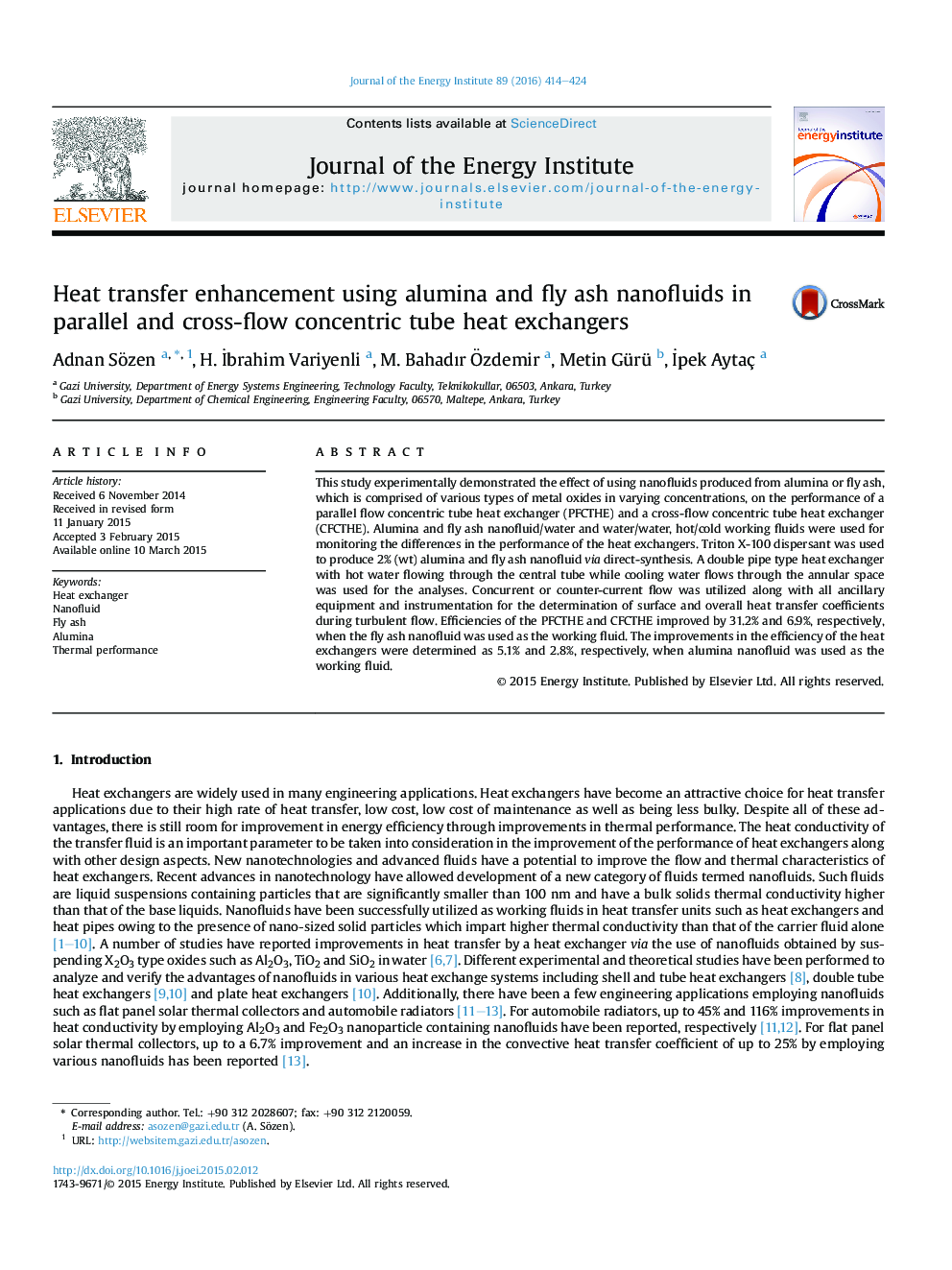| Article ID | Journal | Published Year | Pages | File Type |
|---|---|---|---|---|
| 1747582 | Journal of the Energy Institute | 2016 | 11 Pages |
Abstract
This study experimentally demonstrated the effect of using nanofluids produced from alumina or fly ash, which is comprised of various types of metal oxides in varying concentrations, on the performance of a parallel flow concentric tube heat exchanger (PFCTHE) and a cross-flow concentric tube heat exchanger (CFCTHE). Alumina and fly ash nanofluid/water and water/water, hot/cold working fluids were used for monitoring the differences in the performance of the heat exchangers. Triton X-100 dispersant was used to produce 2% (wt) alumina and fly ash nanofluid via direct-synthesis. A double pipe type heat exchanger with hot water flowing through the central tube while cooling water flows through the annular space was used for the analyses. Concurrent or counter-current flow was utilized along with all ancillary equipment and instrumentation for the determination of surface and overall heat transfer coefficients during turbulent flow. Efficiencies of the PFCTHE and CFCTHE improved by 31.2% and 6.9%, respectively, when the fly ash nanofluid was used as the working fluid. The improvements in the efficiency of the heat exchangers were determined as 5.1% and 2.8%, respectively, when alumina nanofluid was used as the working fluid.
Related Topics
Physical Sciences and Engineering
Energy
Energy Engineering and Power Technology
Authors
Adnan Sözen, H. Ä°brahim Variyenli, M. Bahadır Ãzdemir, Metin Gürü, Ä°pek Aytaç,
